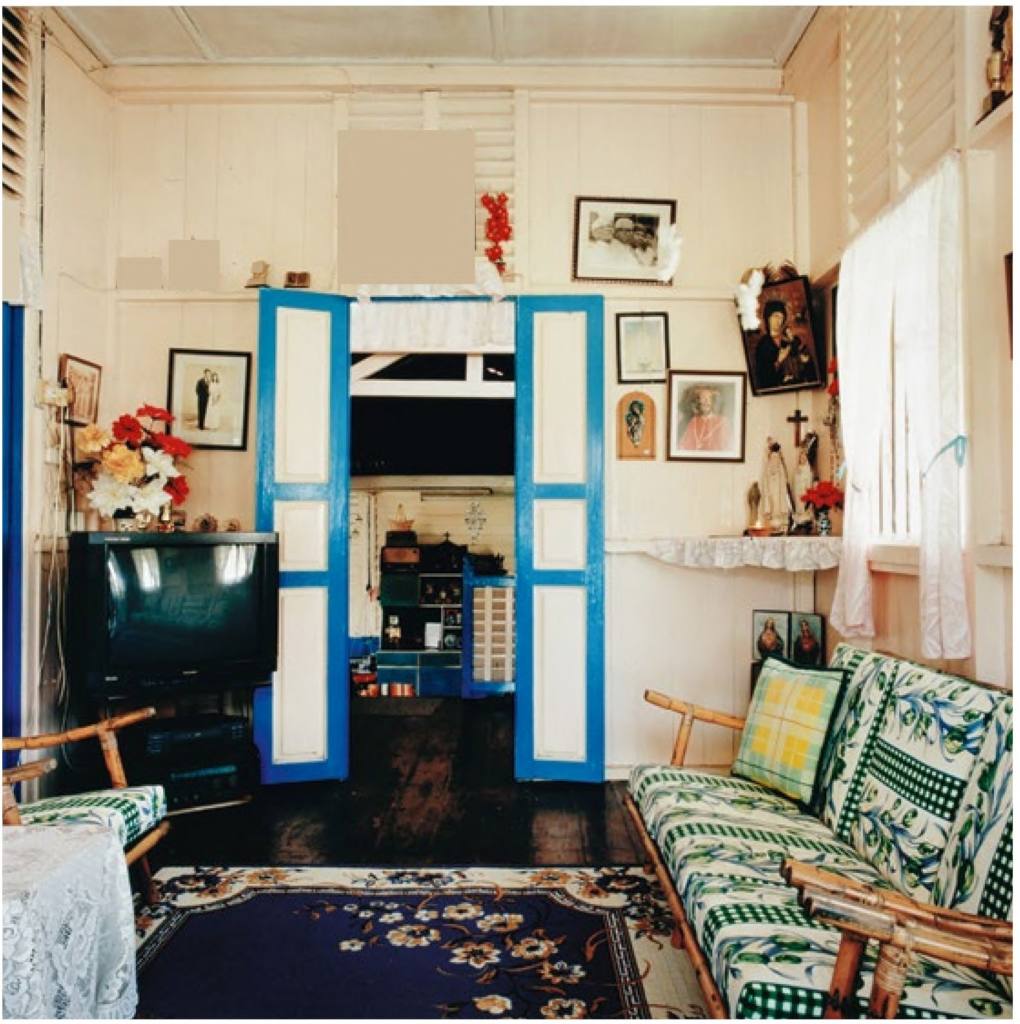Born in 1959 in Singapore, she lives and works between Sydney, Australia, and Port Dickson, Malaysia
Dalam (Malay for ‘deep’, or ‘within’)
2001
Simryn Gill grew up in Malaysia and moved to Australia in 1996. She works with photography, printmaking, writing, drawing, books, and publishing, attending to our relationships to landscapes and places that formed us. Whether walking through the coastal Port Dickson, Malaysia, or the suburbs of Adelaide and Sydney, Australia, Gill observes, gathers, and collects objects and images of places in transition, always questioning how to bear witness to these moments of transformation.
Dalam (2001), which translates as “interior” in Malay, comprises 260 photographs of living rooms taken across West Malaysia over a three- month period. This photograph series chronicles the spaces where identity, home, and a sense of belonging intersect. Unfolding in strong colors, Dalam offers a glimpse into the most public domain of the home, which is nonetheless an intimate context where access is privileged. The uniform square format serves as a metaphorical window through which the viewer “peers” into one room after another, revealing a diversity of cultures and ways of living characterizing multiethnic, postcolonial Malaysia. The varied furnishings—with Malay, Indian, and Chinese ethnic specificities and indications of different religious affiliations—hint at a national identity that is still a work in progress and is undergoing constant negotiation. The distinctiveness of each interior captures a complex tapestry of the Malaysian social fabric, in which the whole is downplayed by the diversity of its parts.
A living room is a reflection of its inhabitants, a place where objects and pieces of furniture preserve personal stories, convey desires, and reveal aspirations through the consumption manifested in the domestic realm. The absence of the inhabitants heightens the strong material presence of the spaces that Gill has chronicled. Her images are all a result of a durational approach that defines her artistic process: hours of looking and looking, wandering, and collecting. Gill probes the nature of photographic process: “When does one have enough? For what … to represent an idea? Does a big group tell you more or less? Does it tell you more truthfully?”



